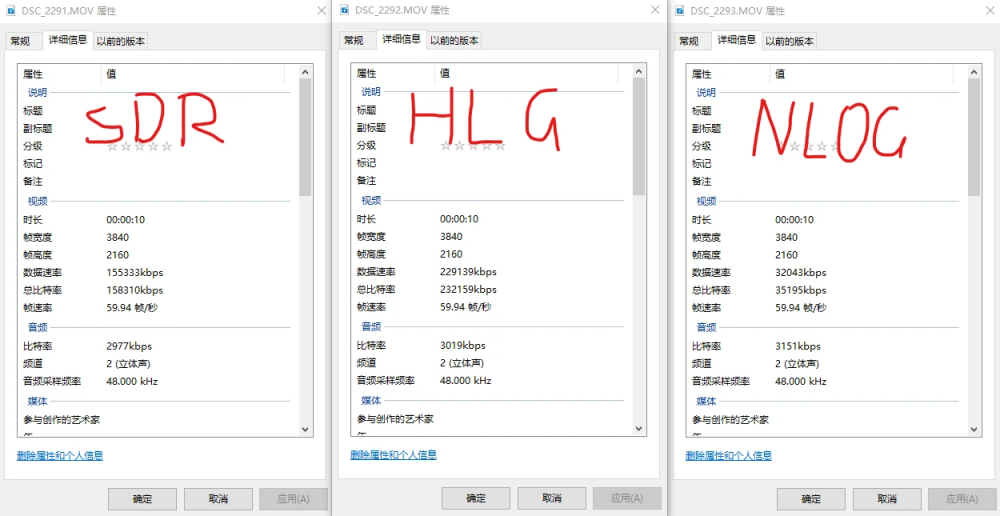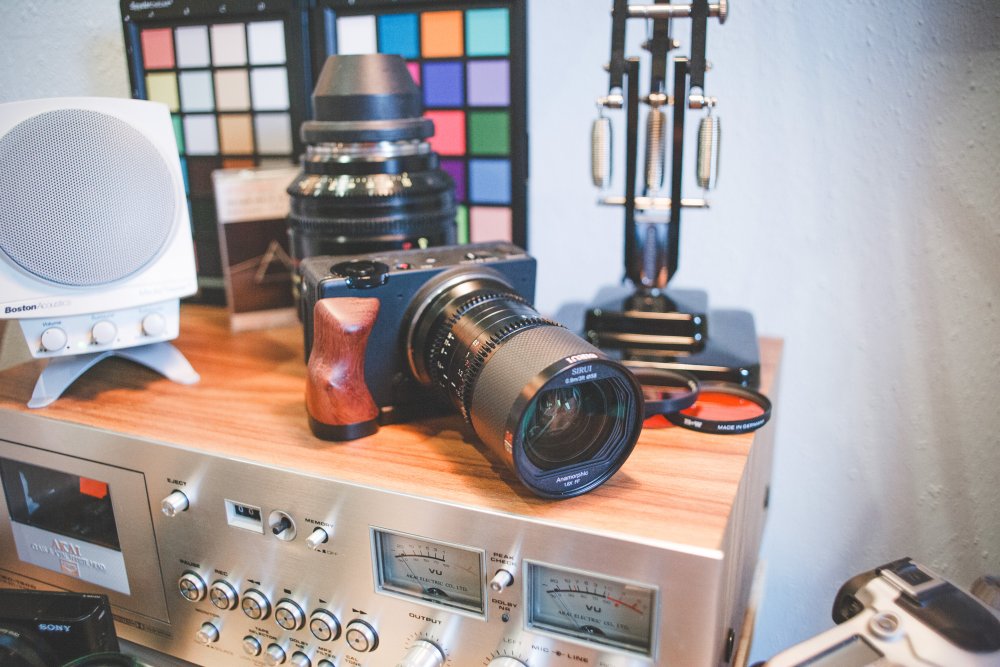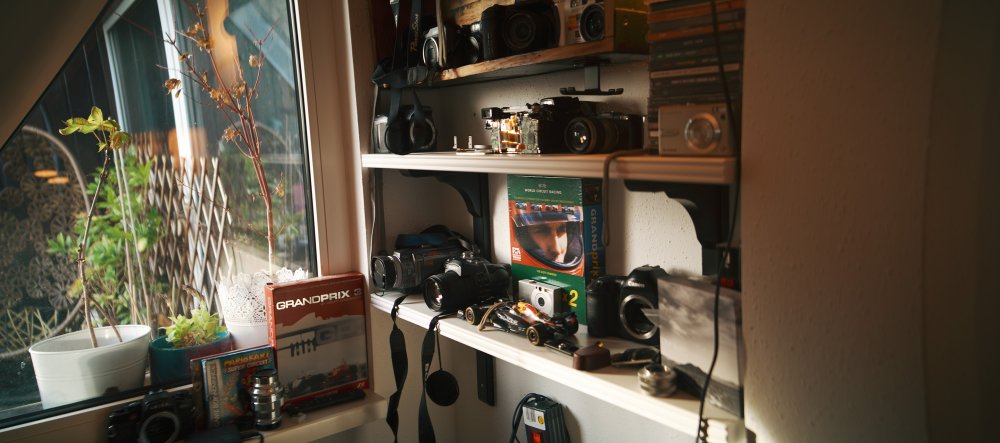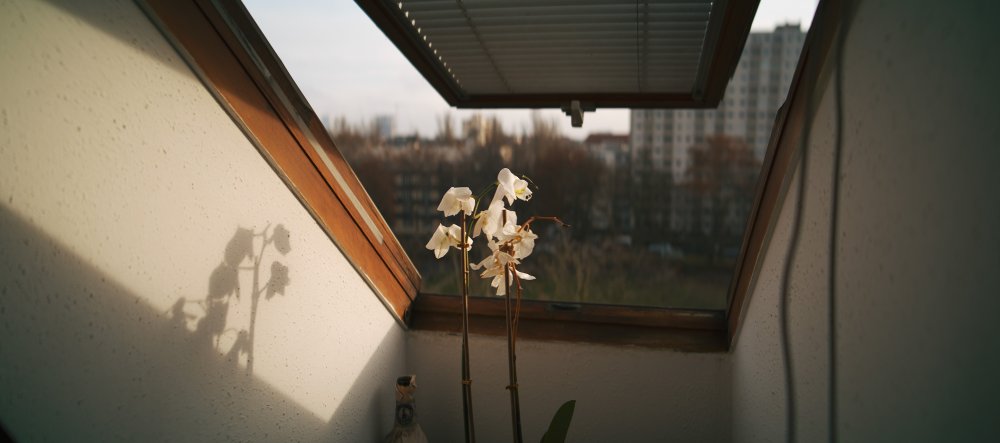All Activity
- Yesterday
-
Amazing feature-film Magellan is shot on the Panasonic GH7
Ninpo33 replied to Andrew Reid's topic in Cameras
Speaking of name dropping AND Lubezki… I was bartending my day job years ago while in film school and came to work to set up the hotel bar and looked up to see The whole crew from “Knight of Cups” standing there silence. I proceeded to hang out and cut fruit for 3 hours while they shot some scenes with Christian Bale and Natalie Portman around the pool and walking in and out of my bar. I was giving “Chivo” and his AC’s beers at the end of the bar and chatting with them in between takes. At the end he wanted to pay and I just laughed. I told him he was a huge inspiration for me and there’s no way they were paying LOL. Have me his business card and got to meet Terrance Malik later. i don’t think any of those scenes even made it into the film but it would have been even better if i got some background work out of it LOL. Loved the way he ran his set and how quiet and professional it was. Lubezki told me Mallick wants it all naturalistic and wanted the hotel and bar open the whole time. No closed set and no yelling from the first AD. Just quietly exploring shots and vibing off of the mood and the actors. I learned a lot through observation and it was inspiring. Epic day. -
Amazing feature-film Magellan is shot on the Panasonic GH7
Ninpo33 replied to Andrew Reid's topic in Cameras
I was just about to mention how good Train Dreams looks and the magical pairing of the Alexa 35 sensor matched with the Kowa Prominar Sphericals. Stunning film and very Chivo-esque. As much as we say the camera doesn’t matter now I think there are arguments for both sides. I think it’s a lot like fine wine. A lot of people are fine with a $5 bottle and can’t really taste the difference between that and a $500 bottle. I can though. -
 Ninpo33 reacted to a post in a topic:
Amazing feature-film Magellan is shot on the Panasonic GH7
Ninpo33 reacted to a post in a topic:
Amazing feature-film Magellan is shot on the Panasonic GH7
-
 Ninpo33 reacted to a post in a topic:
Amazing feature-film Magellan is shot on the Panasonic GH7
Ninpo33 reacted to a post in a topic:
Amazing feature-film Magellan is shot on the Panasonic GH7
-
 Ninpo33 reacted to a post in a topic:
Panasonic S1R arrived. Impressed! Some 5K tests
Ninpo33 reacted to a post in a topic:
Panasonic S1R arrived. Impressed! Some 5K tests
-
They all look the same these cameras to me.
-
We can control H265 quality in Nikon Zr and results are not bad at all. Interesting, I've never heard anybody mention this. https://www.youtube.com/watch?v=iHbq8g6dBCk
-
The comments say Nikon has such great colours, but with LOG footage the colours are up to the user not the camera.
-

ARRI closing up shop, needs a buy-out - maybe Sony?
Andrew Reid replied to Andrew Reid's topic in Cameras
Especially with so much competition, and smaller cameras. -
I see fair differences between them you've actually pointed out. Far to even be similar once converted unless when native perhaps, to my eyes :- )
-
 Emanuel reacted to a post in a topic:
ARRI closing up shop, needs a buy-out - maybe Sony?
Emanuel reacted to a post in a topic:
ARRI closing up shop, needs a buy-out - maybe Sony?
-
 Emanuel reacted to a post in a topic:
ARRI closing up shop, needs a buy-out - maybe Sony?
Emanuel reacted to a post in a topic:
ARRI closing up shop, needs a buy-out - maybe Sony?
-
 Emanuel reacted to a post in a topic:
ARRI closing up shop, needs a buy-out - maybe Sony?
Emanuel reacted to a post in a topic:
ARRI closing up shop, needs a buy-out - maybe Sony?
-
 Emanuel reacted to a post in a topic:
ARRI closing up shop, needs a buy-out - maybe Sony?
Emanuel reacted to a post in a topic:
ARRI closing up shop, needs a buy-out - maybe Sony?
-
Well in the newer cameras (S1II and S1RII) it opens up certain data heavy codecs that are not available in SD but I think with the S1R, it was more a case of having a more robust (and cheaper!) card option? I had mine set up writing to both for peace of mind insurance but beyond that, no other needs.
-
Correct. The question from Zlfan above I guess was what it improves upon over SD card? Maybe you can confirm that it’s more photo related for faster buffer time when shooting continuous stills? I don’t think it helps video in any way…
-
What do you mean? Brazil are sh*te! We’re going to qualify from our group!
-
CF Express type B works in the S1R
-
 MrSMW reacted to a post in a topic:
ARRI closing up shop, needs a buy-out - maybe Sony?
MrSMW reacted to a post in a topic:
ARRI closing up shop, needs a buy-out - maybe Sony?
-
"You reach a level where that 5% more cannot justify the 10, 20x the price." true
-
 zlfan reacted to a post in a topic:
ARRI closing up shop, needs a buy-out - maybe Sony?
zlfan reacted to a post in a topic:
ARRI closing up shop, needs a buy-out - maybe Sony?
-
 zlfan reacted to a post in a topic:
Panasonic S1R arrived. Impressed! Some 5K tests
zlfan reacted to a post in a topic:
Panasonic S1R arrived. Impressed! Some 5K tests
-
S1R is a 6 year old camera so all of the codec options are pretty standard at this point. I think CF express type B will help with photos and faster buffer rate for continuous shooting. Other than that SD cards are fine for video specs.
-
Somebody discovered the h.265 softness issue is a variable bitrate bug. With Nlog its too low. It should be 320Mb/s but its 32Mb/s. They forgot a zero 🙂
- Last week
-
olympus used to have the best jpeg engine.
-
Amazing feature-film Magellan is shot on the Panasonic GH7
zlfan replied to Andrew Reid's topic in Cameras
no surprise. 3 ccd. 1/3 inch means bad low light and no bokur. otherwise, good color. -
nice. so using xqd card can have much higher codec rates?
-
There are two card slots. Camera takes both types of cards.
-
Amazing feature-film Magellan is shot on the Panasonic GH7
Clark Nikolai replied to Andrew Reid's topic in Cameras
Schhwwweeeaaatt!! Just checked out the specs. Nice. If I was looking for a camera I'd totally check it out. https://media.onecall.com/Image_Products/Canon/XHA1_info6.pdf It doesn't have HDMI but it does have HD-SDI through a BNC terminal, meaning it could connect to an external recorder to record in ProRes if you can't find any miniDV tapes anymore. -
what is this xqd card for?
-
Amazing feature-film Magellan is shot on the Panasonic GH7
zlfan replied to Andrew Reid's topic in Cameras
"What has happened is the gap between the top-end i.e. ARRI and the cheap stuff has closed up. This has been going on ever since the start of the DSLR revolution so it's not a new thing but there's never been a smaller gap that exists now, for example between something like the Alexa 35 and a $1000 used Panasonic S1H." True -
Piet Haag started following The mysteriously failing Sony mirrorless cameras
-
The mysteriously failing Sony mirrorless cameras
Piet Haag replied to Andrew Reid's topic in Cameras
Never occurred to me to bake it …. Good tip for future reference. There was also a very very convoluted workaround through Terminal which forced the OS to ignore the graphics card. The G9 mk2 has three extreme high q cuts in the mid range. Apart from the obvious sonic degradation, in my experience, Sidus TC Sync (Deity companion app to sync your files and create an XML for FCP) can’t read timecode recorded on a G9 Mk2. I haven’t tested it but if I was cynically minded. I’d be inclined to wonder if the cuts correspond to LTC @ 24/25/30 fps. Either way it’s an oddly specific piece of camera crippling. There’s a YT vid on it here : https://youtu.be/Ktz4EHpZTAU -
Amazing feature-film Magellan is shot on the Panasonic GH7
zlfan replied to Andrew Reid's topic in Cameras
5d3 ml raw can do 1:1 1920x1920. i tried once, like hassy in video. -
Let's talk Chinese anamorphic stuff, vs vintage. I don't have much modern stuff although did get the full frame Great Joy 60mm T2.8 for L-mount a few months back. Recently picked up one of these though... https://siruishop.de/en/products/saturn?srsltid=AfmBOoqYgHSzTnkpJQ0HBLwj-2r6w0uskpYgytF1N-2y1XJX3hglGgMO It has come down from 1399 euro to 600. I got mine for 180 euros... Aperture blades were broke, so I removed them. Plan to put a DIY oval aperture in it. The look is good, in terms of sharpness and bokeh. Distortion is quite heavy - and pincushion, it's a very wide lens and I don't mind a bit of distortion but would prefer there to be barrel distortion like a Hollywood Panavision anamorphic, pincushion is a bit unexpected. Flare is weak, this is an area the good value for money lenses still can't seem to get right. I'll do some comparison shots with my Iscoramas. It is a 1.6x stretch so very similar to the Iscorama 36 (1.5x). Minimum focus distance is just a tad under 1 meter. It's a full frame lens so this isn't too bad, you can crop for closer-ups. Mainly I am impressed by the size and weight of the thing... It is absolutely tiny for an anamorphic cine lens.
-

Panasonic S1R arrived. Impressed! Some 5K tests
Andrew Reid replied to Andrew Reid's topic in Cameras
As the saying goes it's same as a Leica SL2 inside, so $800 is a real bargain. The S1 / S1R ergonomics are alright, bit too heavy and big. I prefer Sony 4th gen (a7 IV onwards) in that respect, but the S1R really did feel and look like a high-end camera when it came out unlike the new stuff.






